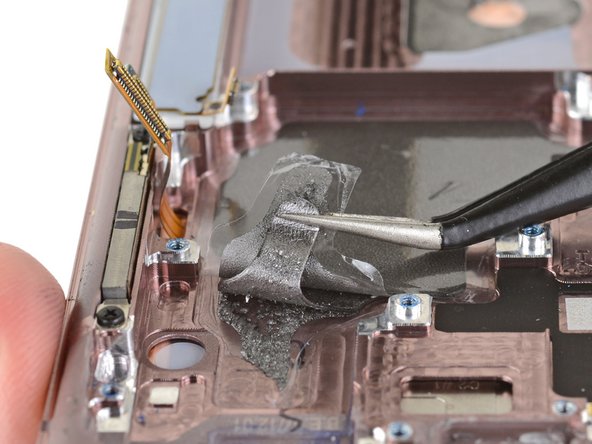crwdns2935425:010crwdne2935425:0






-
The strangest thing about these phones so far is, of all things, what lies underneath the motherboards.
-
Stranger still, it seems some other Note 20 phones do have copper heat pipes—but not our US-spec model. Does the Exynos SoC on international models require different cooling hardware than our phones, with their Snapdragon processors?
-
Our friend Zack, of JerryRigEverything fame, tells us his South Korea model also has graphite. Stay tuned for more details on that.
-
Our next thought was, maybe this comes down to heat-prone 5G mmWave hardware, which not all Notes have—but that doesn't line up either. Is it some kind of A/B test on new cooling hardware? There must be some logic here, but we can't figure it out. Let us know if you have ideas.
-
Speaking of mmWave modules—both our phones have them, but only two each. In contrast, the Note10+ 5G and S20 Ultra got three. Has the hardware improved such that only two are needed, or is something else going on?
| [* black] The strangest thing about these phones so far is, of all things, what lies underneath the motherboards. | |
| [* icon_reminder] To soak up all the heat from each phone's octo-core processor, we expect to find a sprawling copper vapor chamber here—the kind Samsung was always quick to brag about in [guide|131607|previous|stepid=259201|new_window=true] [guide|120331|Galaxy Phones|stepid=232003|new_window=true]. But instead, we find a multi-layered graphite thermal pad. | |
| [* black] Stranger still, it seems [https://youtu.be/rHMOm_3whOM?t=966|some other Note 20 phones|new_window=true] ''do ''have copper heat pipes—but not our US-spec model. Does the Exynos SoC on international models require different cooling hardware than our phones, with their Snapdragon processors? | |
| - | [* black] |
| + | [* black] Our friend Zack, of ''JerryRigEverything'' fame, tells us [https://www.youtube.com/watch?v=7eQG8mRlYHM&t=1s|his South Korea model|new_window=true] ''also'' has graphite. Stay tuned for more details on that. |
| [* black] Our next thought was, maybe this comes down to heat-prone 5G mmWave hardware, which not all Notes have—but that doesn't line up either. Is it some kind of A/B test on new cooling hardware? There must be some logic here, but we can't figure it out. Let us know if you have ideas. | |
| + | [* icon_reminder] ***Update***: We gathered some additional intel on the different cooling systems and some inside dirt on Samsung's design process. [https://www.ifixit.com/News/43501/why-samsung-built-competing-cooling-systems-inside-the-note-20-and-why-its-probably-fine|Read all about it!] |
| [* black] Speaking of mmWave modules—both our phones have them, but only two each. In contrast, the [guide|125590|Note10+ 5G] and [guide|131607|S20 Ultra] got three. Has the hardware improved such that only two are needed, or is something else going on? |
crwdns2944171:0crwdnd2944171:0crwdnd2944171:0crwdnd2944171:0crwdne2944171:0